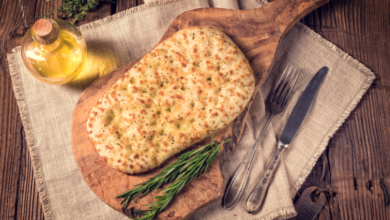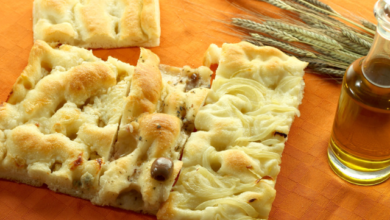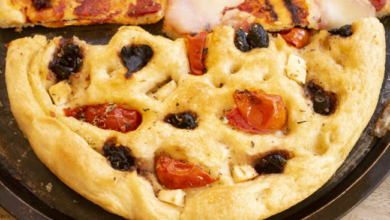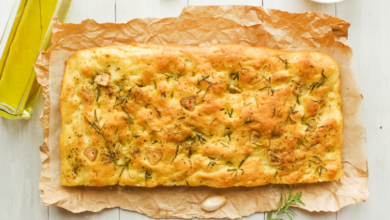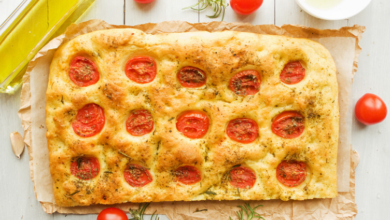Why is my focaccia not rising? You’re not alone!

What To Know
- If your kitchen is cold, consider placing the dough in a warm spot, such as near a radiator or in a turned-off oven with the light on.
- Proofing is the process of allowing the dough to rise in a warm environment.
- A low oven temperature will not generate enough heat to activate the yeast and cause the dough to rise.
Focaccia, the beloved Italian flatbread, is known for its signature airy crumb and golden-brown crust. But what happens when your focaccia stubbornly refuses to rise? This frustrating issue can be caused by various factors, each requiring a specific solution. In this comprehensive guide, we’ll delve into the possible reasons why your focaccia isn‘t rising and provide expert tips to help you achieve the perfect lift.
The Role of Yeast
Yeast is the key ingredient responsible for causing dough to rise. It consumes the sugars in the flour and produces carbon dioxide gas, which creates air pockets within the dough. If your yeast is inactive or insufficient, your focaccia will lack the necessary lift.
1. Inactive Yeast
- Solution: Ensure your yeast is fresh and active by testing it before using. Dissolve a small amount in warm water with a pinch of sugar. If it foams up within 5-10 minutes, your yeast is alive and ready to use.
2. Insufficient Yeast
- Solution: Follow the recipe’s instructions carefully to ensure you’re using the correct amount of yeast. Too little yeast will not produce enough gas to lift the dough.
Dough Consistency
The consistency of your dough plays a crucial role in its ability to rise. Too wet or too dry dough will hinder the yeast’s activity and prevent proper rising.
3. Too Wet Dough
- Solution: Gradually add more flour until the dough becomes less sticky and can form a cohesive ball. Avoid overworking the dough, as this can toughen it.
4. Too Dry Dough
- Solution: Slowly add small amounts of water until the dough reaches the desired consistency. Be careful not to add too much water, as this can weaken the gluten structure.
Temperature Control
Yeast is a living organism that thrives in a warm environment. If the dough is too cold, the yeast will become dormant and unable to produce gas.
5. Cold Dough
- Solution: Ensure the dough is at room temperature (70-80°F) before adding the yeast. You can also warm the water slightly before dissolving the yeast.
6. Cold Kitchen
- Solution: If your kitchen is cold, consider placing the dough in a warm spot, such as near a radiator or in a turned-off oven with the light on.
Proofing Time
Proofing is the process of allowing the dough to rise in a warm environment. Insufficient proofing will result in a dense focaccia, while overproofing can cause the dough to collapse.
7. Underproofed Dough
- Solution: Let the dough rise in a warm place for the recommended amount of time, typically 1-2 hours. The dough should double in size and feel light and airy.
8. Overproofed Dough
- Solution: Reduce the proofing time and monitor the dough closely. Overproofed dough can become sticky and lose its shape.
Baking Techniques
Improper baking techniques can also affect the rise of your focaccia.
9. Low Oven Temperature
- Solution: Preheat your oven to the correct temperature specified in the recipe. A low oven temperature will not generate enough heat to activate the yeast and cause the dough to rise.
10. Overcrowding the Pan
- Solution: Ensure there is enough space between the focaccia loaves in the pan. Overcrowding can prevent the dough from expanding properly.
Additional Tips
- Use Bread Flour: Bread flour contains a higher protein content, which helps create a stronger gluten structure that supports rising.
- Knead Properly: Kneading develops the gluten network, which provides elasticity and strength to the dough, allowing it to trap the carbon dioxide gas.
- Score the Dough: Scoring the surface of the dough before baking allows the steam to escape and prevents the crust from becoming too thick.
- Be Patient: Rising takes time. Allow the dough to proof until it has doubled in size and feels light and airy.
Takeaways
Achieving the perfect focaccia rise is a combination of science and art. By understanding the factors that influence rising, you can troubleshoot any issues and create a delicious, airy focaccia that will impress your taste buds. Remember to experiment with different techniques and find what works best for you.
Common Questions and Answers
Q: Why is my focaccia so dense?
A: Dense focaccia can be caused by inactive yeast, insufficient yeast, underproofed dough, or too wet dough.
Q: How can I tell if my focaccia is overproofed?
A: Overproofed focaccia will be sticky, have a deflated appearance, and may collapse when baked.
Q: What is the ideal temperature for proofing focaccia?
A: The ideal temperature for proofing focaccia is 70-80°F (21-27°C).
